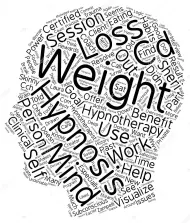Clinical Hypnotherapy
Relaxation, Visualisation, Psychosomatic Symptoms and Pain Management

Clinical Hypnotherapy In a nutshell:
Whispers from the mind
Clinical hypnotherapy gives you the ability to tune into your subconscious and alter your way of thinking. As our beliefs are stored in the subconscious part of the mind, hypnosis gives you the power to access these beliefs in a relaxed and more perceptive state. You can then visualize more healthy and flexible responses to your problem.
Using an induced state of relaxation that feels quite like daydreaming, hypnosis is very much a client-led form of therapy. Contrary to Blockbuster film’s interpretation of hypnotherapy, only you can control access to your subconscious.
Rest assured, your own psychological barriers always protect your thought processes and emotions. Clinical Hypnotherapy is merely your helping hand to refocus your subconscious mind on specific thoughts and feelings, realigning your perceptions, and helping you cope with thoughts and emotions that may be impairing the way you function.
Figuratively speaking, it gives you the power to whisper to yourself, challenge negative beliefs, and transform these beliefs into a more manageable way of thinking.
Relaxation
state of a physical and mental calm, which can be induced by a guided relaxation, hypnosis or some other calming persuades.
Visualisation
can be practised by creating imagery in one’s imagination to stimulate various specific themes, which can then be processed in a calm and more receptive state of mind.
Psychosomatic symptoms
the most common, as well as the most researched psychosomatic symptoms, are related to gastrointestinal issues, headaches, psychological back pain and fibromyalgia.
Pain management (in therapy)
is not focusing on healing injuries or illness but merely focusing on an individual’s perceptions of pain, which can be often worsened by prolonged stress, unhealthy habits and unhealthy emotions, including anxiety and depression.
Chronic pain (in therapy)
is a persistent pain which usually lasts beyond several months. Sometimes goes but tends to reappear. Accepting chronic pain via REBT is thought to reduce unsuccessful attempts to avoid or control pain and thus focus on valued activities and pursuing meaningful goals more realistically and sustainably.
